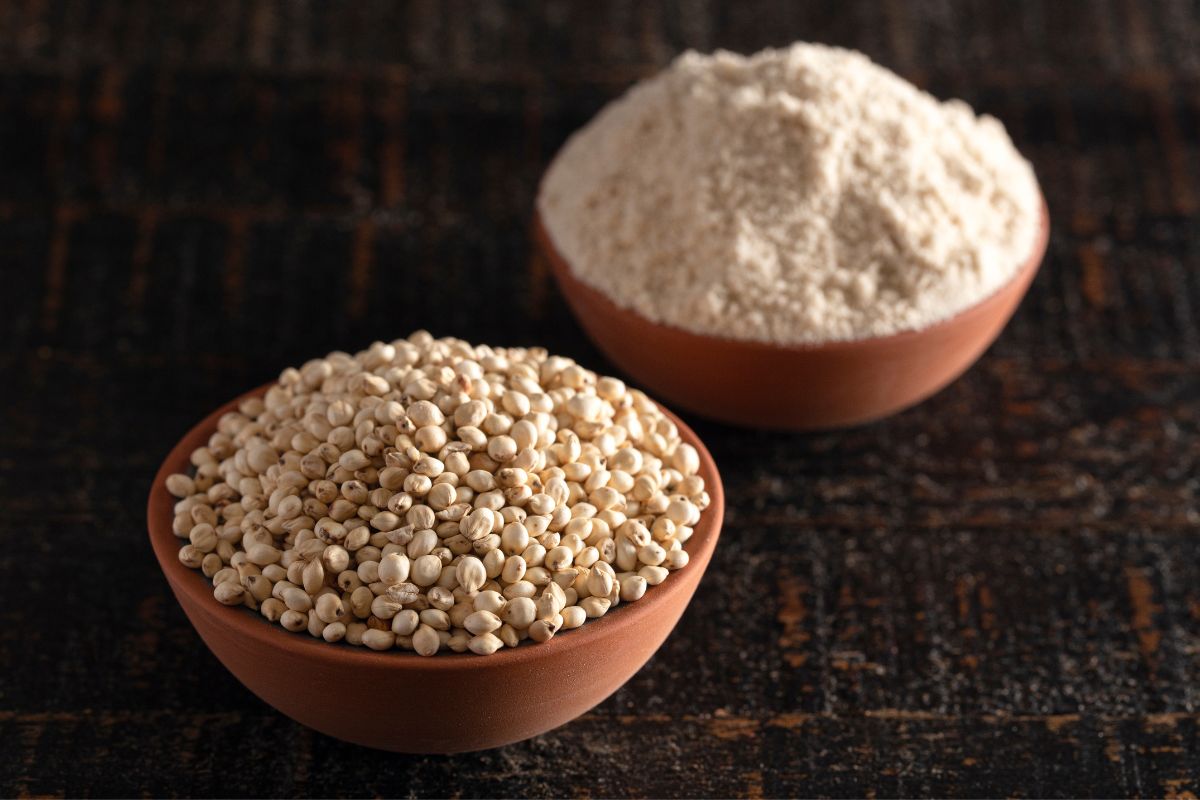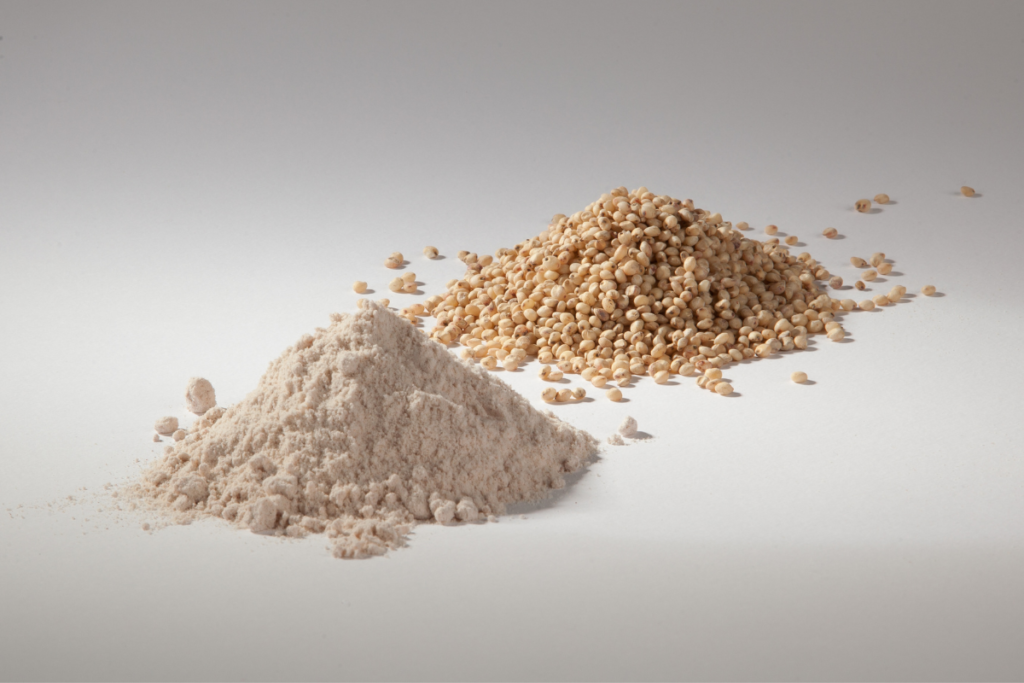When you walk down the bakery aisle at the store, you may have noticed the vast number of new types of flour on the market.
Gone are the days of having just self-raising and plain! As society changes and we learn more about the human body, we have learned to adapt our favorite foods to our needs.
Although it’s great that we now have so many great choices, it can also be a little confusing.
If you’ve seen sorghum flour when wandering around the grocery store, you might ask yourself, why is this any different from any other types of flour?
In this article, learn all about sorghum flour such as what it’s made of and how to use it in your baking practices.
What Is Sorghum Flour Made Of?
Sorghum is a cereal grain that can be found worldwide. Belonging to the grass family, the top of the crop looks similar to that of ears of corn in shape.
The grain itself is small and round and can be found in a number of colors such as red, brown, white, or pale yellow.
These grains are milled into flour which is then sold for commercial use. Alternatively, the grains can be cooked whole, similar to rice or quinoa.
Often considered to be one of the most reliable crops, it is also a popular grain to feed livestock.
Interestingly, it can also be used as a natural fuel source through the production of biofuels thanks to its high sugar and starch content.
Different Types Of Sorghum
As mentioned above, there are different varieties of sorghum that can be identified by their color.
The grain varieties are usually red, tan, white, black, orange, or bronze. The most versatile colors are red, orange, and bronze as they can be used for any purpose.
The colors that are typically used in the food industry, to make flour, are tan, cream, or white sorghum varieties. These are the ones that will be milled into flour and sold in stores.
Sorghum Uses
Other than milling or cooking sorghum grains, you can also use it in a number of other ways you may not expect.
For example, did you know that these grains can be heated in a pan and popped like popcorn?
If you fancy a tasty snack then you can add some salt or sugar to the popped grains for some extra flavor; they can be a little bland on their own.
Finally, sorghum can be made into syrup form and used as a natural sweetener which is popular amongst health food communities.
Health Benefits Of Sorghum Flour

Sorghum flour is a nutrient-dense cereal grain; this means that it’s full of a ton of essential micronutrients that you need to keep you strong and healthy.
Some of the main nutrients include iron, magnesium, potassium, zinc, and vitamins B6 and B1.
Looking at these in a little more depth, B vitamins are vital in ensuring the body’s cells are functioning properly.
The most notable example of this is keeping our skin and brain cells happy and healthy.
Another great health benefit of sorghum flour is that it contains a lot of antioxidants.
Antioxidants such as tannin and flavonoids lessen or prevent the impacts of free radicals in the body. They are also helpful in reducing inflammation.
For those following a plant-based diet, this type of flour is an excellent source of protein. Studies have found that it is similar to the protein content of grains such as quinoa.
So if you aren’t a huge fan of quinoa (and many aren’t), sorghum could be the protein source for you.
Is Sorghum Flour Gluten-Free?
Yes, sorghum flour is naturally gluten-free which makes it a great choice for those that are intolerant or just looking for an alternative to wheat products. Below we have included some ideas on how to use the flour.
The Best Sorghum Flour Recipes
Now you know all about this type of flour, you might be wondering what to actually make with it. You can pretty much make all of your usual tasty treats with sorghum flour, there are no limitations.
We have you covered with these tasty recipes:
- Simple sorghum sourdough
- Gluten-free lemon drizzle cake with sorghum flour
- Sorghum pancakes
- Gluten-free sorghum almond cookies
- Sorghum flour banana bread
- Jowar Roti
Tips For Using Sorghum Flour
Firstly, always choose a brand that hasn’t refined or bleached its product. You’ll want to use 100% sorghum flour.
When using sorghum flour, it’s better to measure the ingredients using weight rather than cups as it has a different consistency from standard flour and may alter the recipe.
Binding agents are also important when baking with sorghum flour, xanthan gum, or cornstarch and help to replicate the textures usually found when baking with wheat flour.
Individual recipes may require different ingredients, so listen to the specific instructions of the recipe for the best results.
Where To Buy Sorghum Flour?
Sorghum flour also goes by the name of ‘jowar’ flour, which comes from Indian origin.
Asian supermarkets or well-stocked grocery stores may sell flour under this name, which is something to bear in mind.
The best place to look for sorghum flour is a health food store such as Whole Foods. If you prefer to shop online, then you’ll find a number of different options.
One of the most popular brands in America is ‘Bob’s Red Mill’, which can be found on sites such as Amazon.
As with many health foods, sorghum flour is more expensive than regular flour.
Sometimes you can get a really good deal in Asian supermarkets and it always pays to buy in bulk things like flour, so you might be able to save some money there.
The Bottom Line
Sorghum flour may be one of the lesser-known types of flour, but it is a super healthy and gluten-free option.
This makes it a great alternative to wheat flour, however, it is more costly and less widely available in standard grocery stores.








